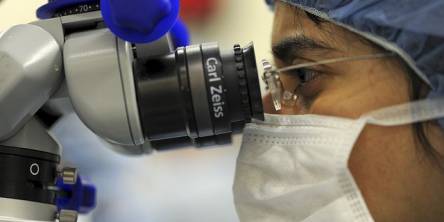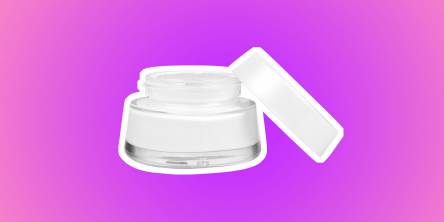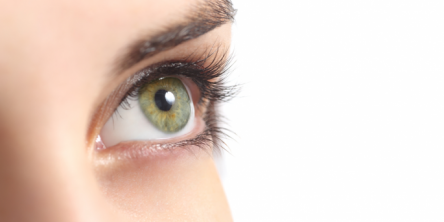Preoperative Tests for Lasik Refractive Surgery
There are millions of patients who every year correct LASIK by losing vision for myopia, farsightedness or astigmatism. LASIK refractive surgery is a cutting-edge technique that uses the excimer laser to correct many of the most common vision defects. This avant-garde laser technique is very safe, little invasive, effective and comfortable. It allows a rapid recovery with totally painless outpatient interventions that generate great satisfaction with the results obtained.
If you are considering the option of correcting a vision defect with laser the surgical techniques, put yourself in the hands of a team of medical experts and perform an in-depth examination a priori to obtain a correct diagnosis. The surgeon must evaluate each case individually, inform the patient of whether or not he is a candidate to undergo a surgical procedure with Lasik and can recommend the most appropriate technique for each case.
It is very important to choose a competent and highly trained medical team that has the most modern machinery to minimize possible postoperative complications and ensure optimal clinical practice.
Before the surgical correction of the refractive defect, the ophthalmologist will perform a deep eye examination. Each patient will be diagnosed and informed of the best surgical technique for their vision defect.
It's important to put attention on:
If contact lenses are used, it is necessary not to use them for 15 days before testing to do the tests you have to dilate the pupil and this generates blurred vision and photo sensitivity that can last for a few hours or a little more, depending on the percentage of the feeling of the person
As a general rule, the patient will have the following examinations before issuing the procedure diagnosis:
1- Anamnesis, which is the overall evaluation of the functional state of the patient because of their physical and psychological situations as well as other factors that can influence the results of the surgery.
2- Exploration of preoperative visual acuity.
3- Determination of refraction and visual acuity corrected by cycloplegia.
4- Exploration of ocular motility.
5- Exploration of pupil motility.
6- Examination with pupillary dilatation of the lens, vitreous, macula, optic nerve, and peripheral retina.
7- In the case of choosing a surgical technique different from LASIK, performing its pertinent tests.
Once the diagnosis has been made and whenever the patient is a candidate for surgical correction with LASIK, the preoperative tests will be performed by Lasik doctors. These tests are performed, as a general rule, a few days before the surgical procedure and do not involve any type of trauma to the patient's eye. Preoperative tests are as follows:
Keratometry
This test, together with the corneal topography, is part of the objective or measurement tests of the optometry. All measurable physical characteristics of the eye are examined with no margin for error. It is a completely painless test in which a series of light images are projected on the anterior aspect of the cornea, taking advantage of its high reflectance, to measure its radius of curvature and make an exhaustive map of the surface of the cornea.
Pupilometry
Through a specific device that incorporates an infrared camera, the pupil's response to different stimuli is measured. It is performed in a dark room with the patient sitting fixing his eyes at a specific point indicated by the specialist technician.
Corneal topography (Orbscan)
This test is used to measure the relief characteristics of the anterior and posterior aspect of the cornea and is used to assess the best surgical technique according to the morphology of your eye, among other uses.
It is a painless and rapid test that does not pose any risk to the patient beyond the possible discomfort of having to fix the gaze at a fixed point for a few minutes.
Pachymetry
It is a test to diagnose the thickness of the patient's cornea. To perform this test, an apparatus called a pachymeter is used that can be incorporated into topographic devices. It does not cause any discomfort for the patient, it is completely painless and quick to perform.
Schirmer test
This test is used to measure the degree of moisture in the eye and the ability to produce tears. It consists of placing a small strip of paper in the connective bag for a few minutes. The test is painless and the small discomfort that the paper strip can cause is minimized with the use of anesthetic drops in case of patient sensitivity.
Aberrometry
With aberrometry, we can know exactly the optical properties of the cornea and the lens from its morphology. From the study of the cornea adapt the treatment to each patient.
It is a painless test that is performed with an apparatus that projects light at the bottom of the eye and measures its rebound with absolute precision.
Similar Articles
In today's digital age, we are constantly exposed to screens of various devices such as smartphones, laptops, and tablets. While these technological advancements have greatly improved our lives, they also come with a downside - digital eye strain.
You don't have to wait until you have visual problems to consult with an ophthalmologist. Regular examinations are recommended to detect the earliest signs of eye disease. You don't want to risk losing your vision in any way. This is why it's important to understand when you should see an eye doctor.
Taking care of your vision and overall eye health is essential for maintaining a good quality of life as you age. Hence, it’s not a good idea to overlook those regular eye exams as they are a crucial aspect of eye care. Read on to explore the most significant reasons for scheduling an appointment with an ophthalmologist, as well as the importance of professional eye care and early detection of potential problems with your vision.
Chandraprabha vati is a standardized herbal formulation mentioned in our ancient texts. This medicine is a mix of various ingredients in a tablet (Vati) form. Chandraprabha vati is a Rasayan (Rejuvenator) and Balaya (Strengthening). It is an analgesic, antispasmodic, anti-hyperglycemic, and a good blood purifier. It is indicated in a number of disorders.
You should see an eye doctor once you turn 40 and then every year going forward. It's critical for them to test your vision because early detection can save significant trouble down the line!
You may suffer a serious eye infection if you do not clean, and disinfect your contact lenses properly.
Living with dark eye circles is not something that we like. But as we age, these appear more prominently under our eyes.
Almost all of the workplaces nowadays are digitalized that demand a lot of computer related works from their employees. However, working for long hours on the computer screen will give rise to a major job-related problem which may need a Computer Eye Strain Treatment.
Eyelid surgery is medically termed as Blepharoplasty. It is a popular solution that targets the lower eyelids, upper eyelids or even both. Eyelid surgery enhances the eyes and rejuvenates the face by eliminating fine lines, under eye bags and drooping eyelids.









